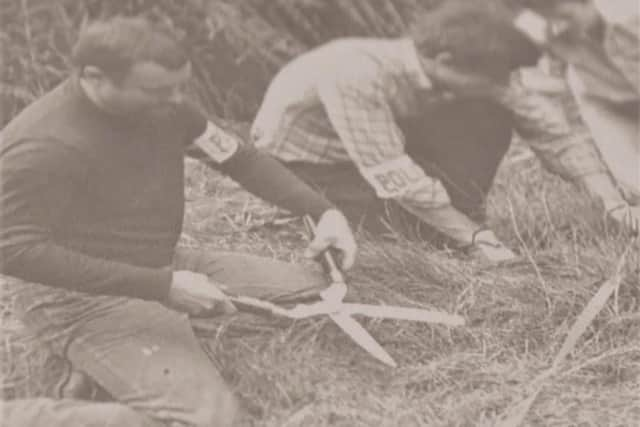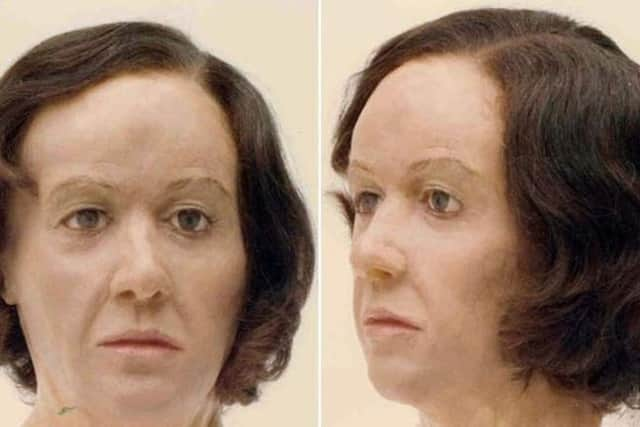Nude In The Nettles: Cold case team revisiting mystery death which has remained unsolved for 40 years
In 1981, a chilling phone call was made to Ripon Police Station. The caller refused to give his name, citing national security reasons, and hung up.
The call lasted a few seconds. Once it was over, officers searched the area near Sutton Bank and found the woman’s decomposed remains in the undergrowth, exactly as the caller described.
Advertisement
Hide AdAdvertisement
Hide AdHe was never traced and 41 years later, the mystery still remains.


Extensive investigations took place at the time, and in the years that followed, but the woman has never been identified.
Now, a specialist cold case team from North Yorkshire Police is revisiting the investigation in a bid to finally solve the mystery which at the time was dubbed “the nude in the nettles”.
The last time detectives actively investigated the case was 2012 when her body was exhumed from an unmarked grave to gather new DNA evidence and, while there have always been theories that foul play was involved, there has never been enough evidence to officially categorise it as homicide.
Advertisement
Hide AdAdvertisement
Hide AdPolice now believe gaps in people’s family tree could give them fresh leads to finally unlock the secrets of the case, combined with advances in science and forensic methods that have come on since the 1980s.


Former detective, Adam Harland, now heads North Yorkshire Police’s Cold Case Review Team and says this case remains “one of the most enduring mysteries” he has ever worked on.
“It’s highly unusual for someone who has died in these circumstances to remain unidentified for decades”, he says.
“We don’t know when she was last heard of. It could have been that she last saw her family on the day she died in 1979, it may be she last saw them as a small child in the 30s, along came the war, rest of the family are wiped out and she might have lived in care.
Advertisement
Hide AdAdvertisement
Hide Ad“Children she may have had may have gone into care. They may have known their mother or may never have.”
He hopes family tree searches, long-lost relatives and secrets that have been long held and never spoken of could be the key to finding out who the woman was and what happened.
Mr Harland said: “If names are put forward, we’re now in a position where we can apply this information to our DNA forensic records for this lady.
“Local knowledge may offer up this information. People’s lives and allegiances move on, and time can tease out information that has been closely guarded in the past.
Advertisement
Hide AdAdvertisement
Hide Ad“Another possibility is someone who’s researched their family tree might have found a gap, or discovered a relative who disappeared from official records around 1979 to 1981 without any clear explanation.”
“I’d rather 200 names were put to us and 199 were wrong than nothing to work from at all. That one piece of information could be all we need now to solve a decades-old mystery.”
What police do know is this. The victim was probably born between 1935 and 1940, making her between 39 and 44 when she died, was probably from a low socially-economic background and possibly from an industrial city in the north of England.
It was impossible to determine an exact date of death, but other evidence at the scene, and her advanced state of decomposition, led detectives to believe she probably died in 1979.
Advertisement
Hide AdAdvertisement
Hide AdA post-mortem showed she gave birth to two, or perhaps three babies, who could now be in their 60s.
She was white with brown hair, around 5ft 4ins tall and wore size-four shoes. She had several distinguishing features, including a mild upper spine malformation that could have made her hold her head at an unusual angle.
She also had several missing teeth and other evidence of a lifestyle that involved regular smoking and drinking.
It would be 14 more years before a DNA database was created so a DNA match would now rely on a living son or daughter of the woman committing a crime and being added to it, which is unlikely given their age range.
Advertisement
Hide AdAdvertisement
Hide AdHowever, investigators hope the passage of time can now provide the missing link that enables them to finally identify the woman and resolve a decades-long mystery.
Mr Harland added: “The reason for why now, is that people we are most likely to speak to will be elderly - if she was 45 in 1980, she would be 85 now. For the last couple of years we have had COVID, we very much like to see people in person but the people we want to speak to were in the most vulnerable groups.
“Now we have the opportunity to speak to people and have those extended conversations.”
